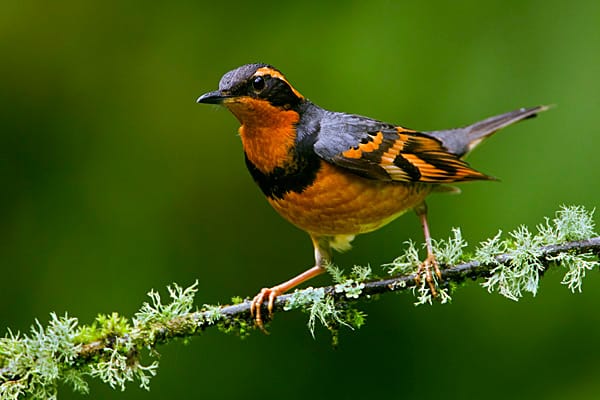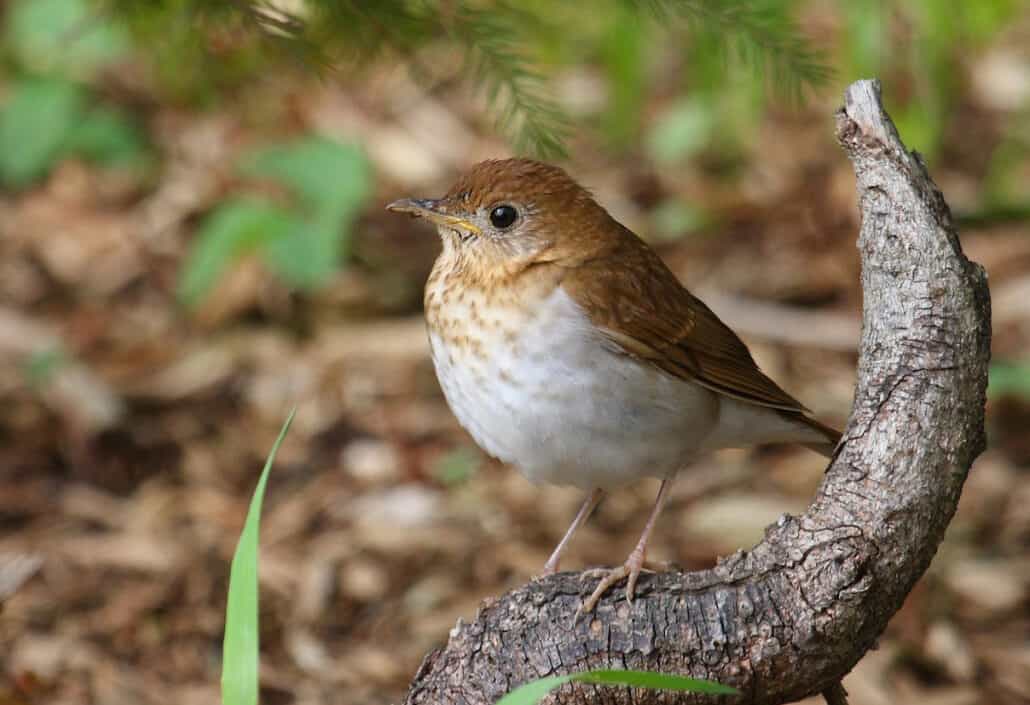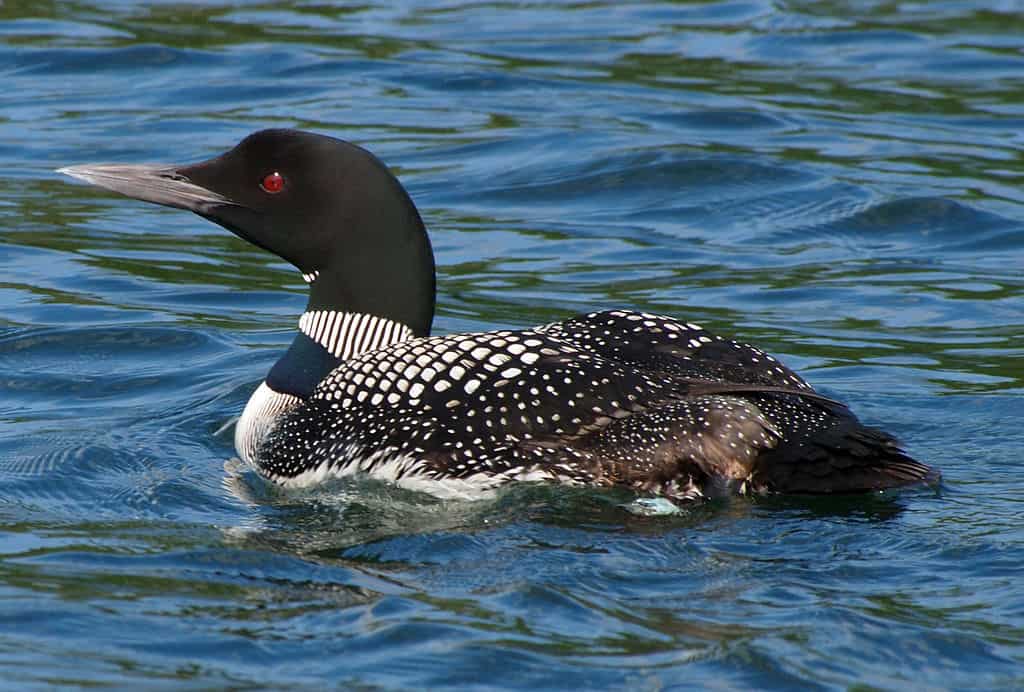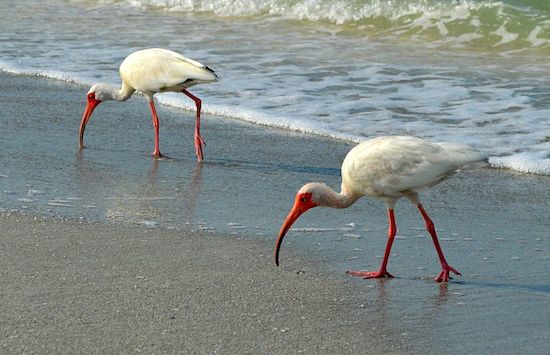Look for
The varied thrush is large songbird with a stout build, short tail, and distinctly colored plumage. It has a deeply pigmented, dark orange throat, breast, flanks, and eyebrow stripe. Its upperparts are a dark bluish-gray and its lower belly and undertail are white. It has grayish-black patches along the sides of its face as well as a dark band across its breast. Its wings are bluish gray with two dark orange wing bars and brown legs.
Listen for
The varied thrush’s song is a buzzy, high-pitched whistle on one pitch that is held for one or two seconds before a pause of three to 20 seconds. It repeats this pattern for 10 minutes or so from a high perch in a conifer, and then flies to a new perch and begins again. Its call is a short series of sherrr notes.
Find it
The varied thrush breeds western North America, primarily in Alaska, Yukon, British Columbia, and a western sliver of the Northwest Territories. Its breeding range stretches down into the northwestern United States in Washington, Oregon, Idaho, and small areas of western Montana and northern California.
It prefers to live in dense, moist coniferous or deciduous forests. In winter it migrates further south along the Pacific Coast, settling primarily in Southern California, where it can be found similar environments as in breeding season as well as parks, gardens, and around bodies of water.
Diet
The varied thrush feeds primarily on a variety of insects such as worms, crickets, beetles and ants. In winter most of its diet is made up of acorns, nuts, and wild fruits, including apples, thimbleberry, and huckleberry. It forages by hopping on the ground, using its bill to push and toss aside leaf litter. It also feeds on berries and fruit on the branch or on the ground after the fruit has fallen.
Nesting Behavior
The varied thrush places its nest in the understory of the forest, usually in the branches of a small coniferous tree or on the ground. The precise placement can vary quite a bit, but is most often built on branch close to the trunk, and 5 to 20 feet above the ground.
The female alone builds the nest, constructing an open cup shape using dead leaves, twigs, moss, and bark lined with finer plant materials. She lays two to five eggs that are light blue with faint brown spotting. The female alone incubates the eggs for around 14 days before hatching. Both parents feed and care for the young before they are fledge at 13 to 15 days. It is not known how long the parents care for the young after fledging.




